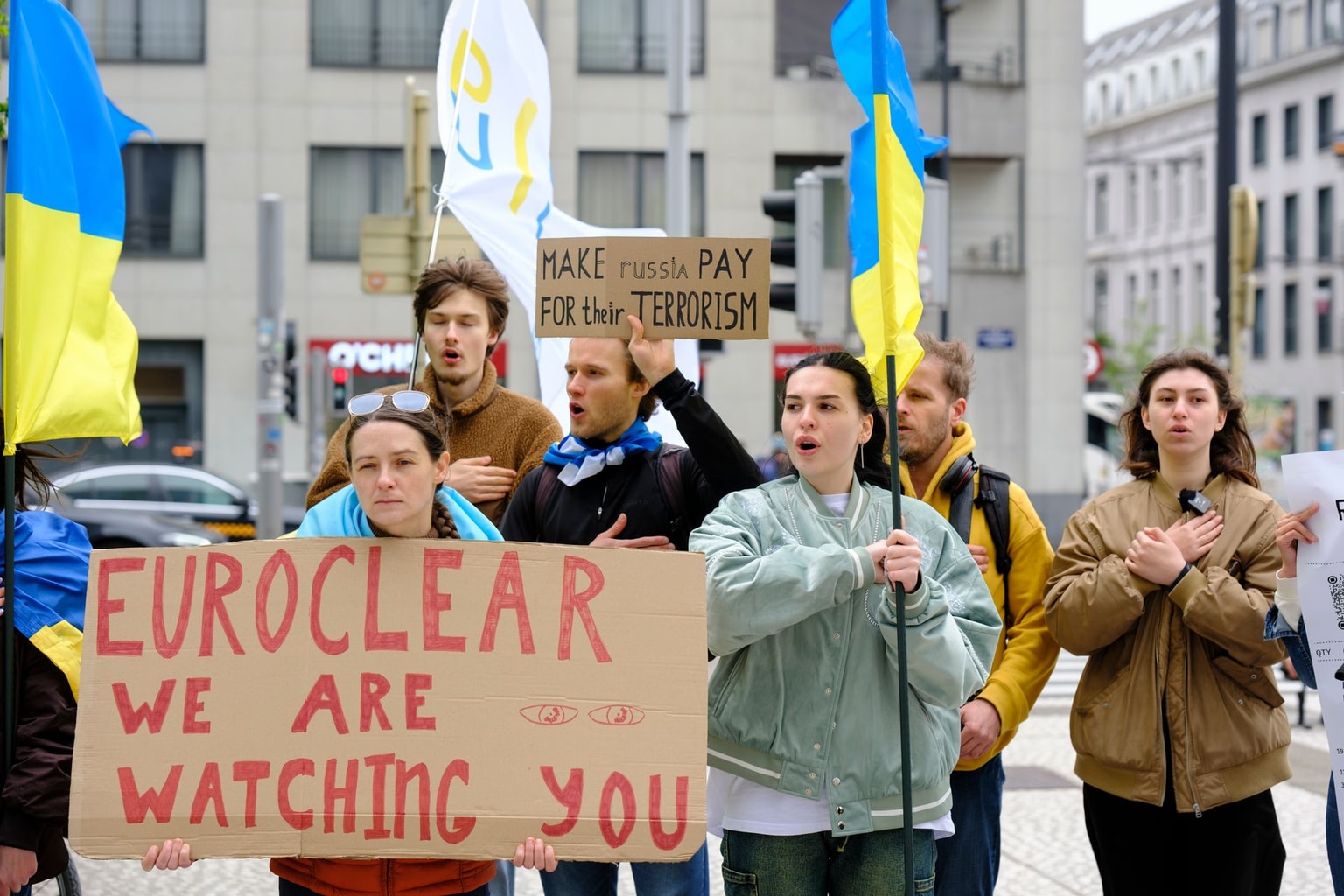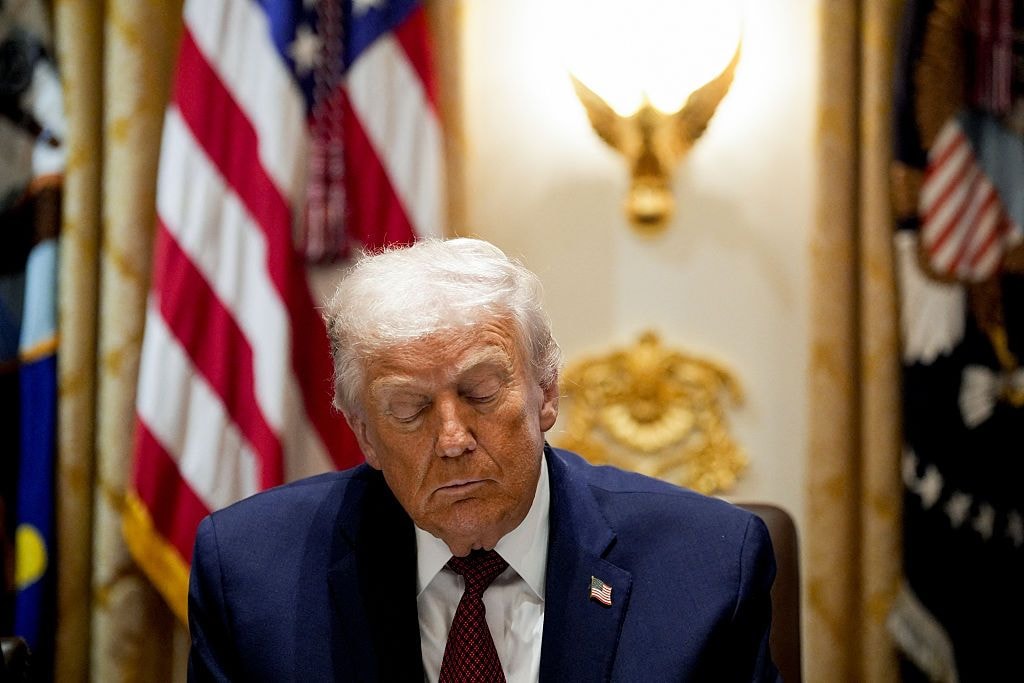Ukraine war latest: Ukraine's military now totals 880,000 soldiers, facing 600,000 Russian troops, Kyiv claims

Key developments on Jan. 15:
- Ukraine's military now totals 880,000 soldiers, facing 600,000 Russian troops, Zelensky says
- Russia launches mass missile attack against Ukraine
- Ukraine, Russia have to make concessions to end war, Rubio says
- Ukraine brings back 25 people from Russian captivity, including Azovstal defenders
- Lithuania would consider troop deployment to Ukraine upon Kyiv's request, FM Budrys says
- NATO defense budget could surpass Russia's tenfold if Europe matches Poland's spending, Tusk says
President Volodymyr Zelensky said on Jan. 15 that Ukraine's military now comprises 880,000 soldiers, tasked with defending the entire country against 600,000 Russian troops concentrated in specific areas.
Speaking at a joint press conference with Polish Prime Minister Donald Tusk in Warsaw, Zelensky said that Russia's localized troop concentration creates a numerical advantage.
"Russian troops are concentrated in several areas, so in some areas, they have a quantitative advantage," he said.
Ukraine has been struggling with a manpower shortage, especially in the infantry, while Russia has intensified its offensive in Donetsk Oblast since the summer of 2024.
Earlier on Jan. 14, a scandal erupted in Ukraine as Air Force members claimed they were being transferred to bolster the infantry.
According to Ukrainska Pravda, Commander-in-Chief Oleksandr Syrskyi issued an order on Jan. 11 to transfer over 5,000 Air Force personnel to Ground Forces units. A senior Air Force officer, speaking anonymously, said transfers began in spring 2024 and have now reached a "critical level," with unit staffing dropping to 50%.
The General Staff of Ukraine's Armed Forces denied claims of transferring technical and aviation personnel, saying that these resources are being increased.
Critics have called for deeper mobilization reforms, as Ukraine's army faces challenges related to demographics and an uneven mobilization process.
In 2024, Ukraine lowered its minimum mobilization age from 27 to 25 but resisted calls from international partners to reduce it further to 18.
Zelensky also reported progress in arms production, saying that Ukraine now covers 33-34% of its annual weapons needs — up from less than 10% before the full-scale invasion. Europe and the U.S. supply more than 60% of Ukraine's weaponry, with each accounting for about 30%.

Russia launches mass missile attack against Ukraine
Russia launched a large-scale missile attack against Ukraine on the morning of Jan. 15, using Kh-101, Kh-22, and Kalibr cruise missiles, Ukraine's Air Force reported.
The Russian Defense Ministry had previously threatened to retaliate after Ukraine targeted military and industrial sites throughout Russia in a mass attack on Jan. 14.
Ukraine's Air Force issued a nationwide aerial alert in the early hours of Jan. 15, following warnings that a group of Tu-95MS strategic bombers had taken flight from Russia's Olenya airfield in Murmansk Oblast.
Russia also reportedly launched ballistic missiles from Belgorod Oblast.
Explosions were reported in Kharkiv, Khmelnytsky Oblast, and Ivano-Frankivsk Oblast. In Lviv Oblast, Lviv Mayor Andrii Sadovyi said Russian forces had "attacked the energy infrastructure of our region and Ukraine."
Later in the morning of Jan. 15, officials in Lviv Oblast said critical infrastructure facilities had been hit in two districts of the oblast but added there were no casualties. There was no information on what was hit or the extent of the damage caused.
Svitlana Onyshchuk, head of Ivano-Frankivsk Oblast Military Administration, said the attacks had targeted "critical infrastructure facilities" in the oblast but had not caused any casualties. No further details were provided.
Ukraine's state grid operator, Ukrenergo, imposed emergency blackouts as a preventative measure, Energy Minister Herman Haluschenko announced.
"It's the middle of winter, and the target for the Russians remains the same: our energy sector," President Volodymyr Zelensky wrote on his Telegram channel later in the morning on Jan. 15.
"More than 40 missiles were involved in this strike, including ballistic missiles. At least 30 were destroyed. There were also more than 70 Russian attack drones overnight," he added.
"We constantly need to strengthen the existing capabilities of the Ukrainian air shield. Our partners at the NATO summit in Washington and in the Ramstein format made promises that have not yet been fully realized."
Shortly after eight in the morning, the all-clear was given across much of the country.
Poland scrambled fighter jets due to the Russian missile threat in western Ukraine, according to the Polish Operational Command.
Ukraine, Russia have to make concessions to end war, Rubio says
Both Ukraine and Russia will have to make concessions to end the war, Marco Rubio, U.S. President-elect Donald Trump's pick for secretary of state, said on Jan. 15 at his confirmation hearing before the Senate Foreign Relations Committee.
Rubio called on everyone to be realistic, suggesting that Russia's concession would be to not advance any further, while Ukraine's concession would be to give its territories currently under Russian occupation.
"It is important for everyone to be realistic: There will have to be concessions — made by the Russian Federation, but also by the Ukrainians… It is also important that there be some balance on both sides," Rubio said.
Since invading Ukraine in 2014 and escalating its war of aggression in 2022, Russia has occupied about 20% of Ukrainian territory, imposing repressive measures on the local population and prohibiting any expressions of Ukrainian identity. Ukraine has repeatedly said it would not recognize its territory currently under Moscow's control as Russian.
Trump, who takes office on Jan. 20, repeatedly pledged during his election campaign to negotiate a swift end to the war after taking office. However, he has never elaborated on how exactly he plans to achieve that.
"There is no way Russia takes all of Ukraine. The Ukrainians are too brave and fight too hard, and the country is too big. That's not gonna happen," Rubio said.
"It is also unrealistic to believe that somehow a nation the size of Ukraine… gonna push these people (Russian troops) all the way back to where they were on the eve of the invasion," he added.
According to Rubio, the U.S. must not allow Russian President Vladimir Putin to return to his plans to take over Ukraine in four or five years.
Rubio publicly praised the bravery of Ukrainian defenders but was among the 15 Republican lawmakers in the Senate who voted against the $61 billion aid package for Ukraine, which was eventually passed in April 2024.
Rubio did not support President Joe Biden's administration's policy regarding assistance to Ukraine, as, according to him, the White House "has never been clear about how this conflict will end."
The 53-year-old Florida Senator will replace Antony Blinken in the position, and as the top U.S. diplomat, he would be at the forefront of potential peace negotiations between Kyiv and Moscow.
Ukraine brings back 25 people from Russian captivity, including Azovstal defenders
Ukraine managed to bring back 25 Ukrainians from Russian captivity, including Azovstal defenders, President Volodymyr Zelensky announced on Jan. 15.
"Returning our people home is something that Ukraine is constantly working on. And we will not stop until we bring all of our people back," Zelensky said in a post on Telegram.
The returning Ukrainian POWs were captured during the defense of Mariupol and its Azovstal steel plant, as well as during the defense of other key areas of the front line in Kharkiv, Donetsk, Zaporizhzhia, and Kherson oblasts, Zelensky added.
He said some of those brought back have serious injuries and illnesses.
The exchange was conducted on a 25 for 25 basis.
In a recent agreement, Russia and Ukraine agreed to prioritize wounded POWs at the selection of exchanges, followed by those held longest in captivity.
President Zelensky also expressed his gratitude to the United Arab Emirates for mediating between the parties.
Over the past year, Ukraine conducted 11 prisoner exchanges and secured the return of 356 more people than in 2023. Since the start of the full-scale invasion, Nearly 4,000 people have been released, including 1,358 in 2024.
Lithuania would consider troop deployment to Ukraine upon Kyiv's request, FM Budrys says
Vilnius would consider deploying troops to Ukraine with its allies in the future if Kyiv were to make such a request, Lithuanian Foreign Minister Kestutis Budrys told LRT TV on Jan. 14.
The proposal for an international peacekeeping force has gained traction recently, as European nations prepare to take a more prominent role in Ukraine's defense when U.S. President-elect Donald Trump takes office on Jan. 20.
Budrys said that Lithuania did not rule out such possibilities which were touted at a summit in Paris last year when French President Emmanuel Macron invited Lithuania's president and others to explore expanded military involvement in Ukraine.
"Lithuania is a security provider in the region, not just a recipient," Budrys said. "If the question arises, I have no doubt that the Lithuanian flag will be there."
"We'd talk with our allies and partners about what it looks like, and we'd talk with Ukraine about what it looks like," he added.
Macron has championed the idea of deploying European troops in Ukraine since early 2024.
President Volodymyr Zelensky and Macron discussed the possibility during a meeting on Dec. 18, and Macron raised the proposal again during a trilateral meeting with Trump on Dec. 7. Trump reportedly expressed interest in European-led ceasefire monitoring.
On Jan. 13, Zelensky and Macron held a phone call to discuss Ukraine's air defense priorities and the possible deployment of peacekeepers. Both leaders agreed to meet soon to advance plans for securing guarantees for Ukraine.
U.K. Prime Minister Keir Starmer is also expected to visit Ukraine in the coming weeks to discuss the peacekeeping initiative, Bloomberg reported on Jan. 10.
NATO defense budget could surpass Russia’s tenfold if Europe matches Poland’s spending, Tusk says
Polish Prime Minister Donald Tusk advocated for increased defense spending across NATO on Jan. 15, arguing that if all European members matched Poland's spending, NATO's defense budget would be ten times that of Russia's.
"No one but Europe will solve its defense problems," he said during a joint press conference with President Volodymyr Zelensky in Warsaw.
Tusk's comment comes amid growing calls for higher defense spending across NATO, a topic reignited by Russia's full-scale invasion of Ukraine in 2022 and advocated for by incoming U.S. President Donald Trump.
"Other countries should not pay 1.5 percent of their GDP for defense — this is not enough," he said, emphasizing that robust European defense contributions could help maintain friendly U.S.-European relations.
On Jan. 7, Trump called for NATO's spending target to rise to 5% of GDP, significantly higher than the current 2% goal.
"If all European countries start taking their obligations in NATO seriously, I am sure America will be happy to cooperate with us," Tusk added.
While the 5% suggestion has faced resistance, some NATO members are reportedly open to a more modest increase, potentially to 3% of GDP, Reuters reported on Jan. 10.
NATO Secretary General Mark Rutte quipped on Jan. 13 that allies should increase spending or prepare to "take Russian language courses or move to New Zealand." Currently, 24 out of 32 NATO countries meet the 2% GDP target, but several, including Italy, Canada, and Spain, fall short.
Zelensky praised his discussions with Tusk, highlighting their focus on bolstering Ukraine's defense capabilities and advancing sanctions against Russia.
"We discussed our defense, including the supply of weapons, weapons production, and related investments. We also focused on strengthening sanctions against Russia and bringing peace closer for Ukraine and all of Europe," Zelensky said on X.












